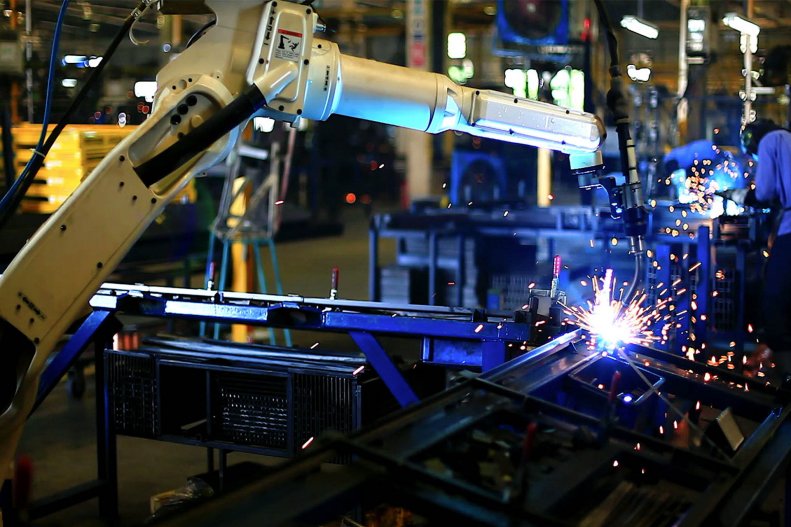What is Clean Economy?
The Clean Economy fits within our clean technology (‘Clean Tech’) theme, and refers to companies who seek to have a positive environmental impact, by developing new technology across areas such as energy efficiency, smart grids, clean energy, and sustainable resources.
Each day, more than 200,000 additional people populate the planet1 , further challenging how far natural resources must stretch to sustain human life. Clean tech companies strive to create genuine solutions to help address these challenges.
The ‘Clean Economy’ is the rapidly growing universe of companies whose activities improve resource sustainability, support the energy transition (from fossil-based to zero-carbon energy production and storage) or address the issue of water scarcity.
- V29ybGRvbWV0ZXIgYWdncmVnYXRlIGZyb20gVW5pdGVkIE5hdGlvbnMgUG9wdWxhdGlvbiBEaXZpc2lvbiwgV29ybGQgSGVhbHRoIE9yZ2FuaXphdGlvbiAoV0hPKSwgRm9vZCBhbmQgQWdyaWN1bHR1cmUgT3JnYW5pemF0aW9uIChGQU8pLCBJbnRlcm5hdGlvbmFsIE1vbmV0YXJ5IEZ1bmQgKElNRiksIGFuZCBXb3JsZCBCYW5rLCBjb3JyZWN0IGFzIGF0IFNlcHRlbWJlciAyMDIw
Why now for the Clean Economy?
Consumers are demanding more of companies and governments as concerns over the sustainability of human civilisation on earth deepen.
The world is changing, and we have identified three reasons why we believe now is the time for the Clean Economy:
- Environmental pressure is rising: In recent years the rising potential for human suffering and huge economic loss due to climate-related disasters has been driving more urgency than ever to manage carbon emissions and limit global warming. A lot has happened since nearly every nation on earth committed to a low carbon future by signing the Paris Agreement in 2015 but there’s still a long way to go and the transition to a low carbon future requires carefully balanced social and economic transformation.
- Awareness is rising: Awareness of the impact of pollution is being increasingly driven by governments, consumers and corporates. There is strong regulatory support across the EU (Green Deal), US (Biden's administration) and even China (carbon neutral commitment by 2060).
- Action is rising: Consumers are changing their consumption habits at a faster pace, while companies are investing massively in new clean technologies to avoid the rising cost of taxes and penalties from emissions and to guard against the impact of potential non-financial risks arising from a climate crisis.
These three combined are encouraging governments and companies to reassess their policies and start to implement meaningful change and invest in the circular economy and new Clean tech.

Green bonds
Green bonds are among the most interesting innovations of the last decade in the field of socially responsible investment products.

Biodiversity
New nature-related policies and regulation being developed should drive new investment opportunities as corporates commit to biodiversity positive business models.

US high yield low carbon
We believe the global economy has entered a ‘decade of transition’ towards a more sustainable, de-carbonised model.

Social bonds
Rapid growth in the social bonds market can offer a compelling opportunity to invest in the social dimension of the transition to a low carbon economy.

Social progress
Invest in the companies providing strong social utility by making essential products and services better quality, more affordable and more accessible to all.
Our Clean Economy strategy
Our approach to investing in the Clean Economy seeks to identify high-quality, growth-oriented companies operating across one of four key investment areas impacted by the finite amount of natural resources:
- Low Carbon Transport: Across the world, the demand for sustainable transport is increasing, providing opportunities in electric vehicles, battery technologies and emission reduction systems.
- Smart Energy: The necessity and demand for greener homes is growing, helping to provide the impetus and resources for the development of energy efficient technologies. This is creating opportunities in renewables, greener homes, and efficient factories.
- Agriculture & Food Industry: Companies are exploring new ways to meet the growing demand of rising populations while limiting the use of scarce water and land. This is providing opportunities in firms that are developing food and agricultural technologies.
- Natural Resource Preservation: Public opinion is shifting and putting pressure on companies to better manage supply chains - and is providing opportunities in companies who are mitigating their environmental damage and evolving their practices.
We aim to provide transparent and measurable impact metrics focused on UN Sustainable Development Goals3 contributions towards environmental and societal issues, including:
- 6 - Clean water and sanitation (Ensure availability and sustainable management of water and sanitation for all)
- 7 - Affordable and clean energy (Ensure access to affordable, reliable, sustainable and modern energy for all)
- 11 - Sustainable cities and communities (Make cities and human settlements inclusive, safe, resilient and sustainable)
- 12 - Responsible consumption and production (Ensure sustainable consumption and production patterns)
- 13 - Climate action (Take urgent action to combat climate change and its impacts)
- 14 - Life below water (Conserve and sustainably use the oceans, seas and marine resources for sustainable development)
The targeting of specific SDGs does not imply the endorsement of the United Nations of AXA Investment Managers, its products or services, or of its planned activities and does not constitute, explicitly or implicitly, a recommendation for an investment strategy.
- aHR0cHM6Ly93d3cudW5kcC5vcmcvc3VzdGFpbmFibGUtZGV2ZWxvcG1lbnQtZ29hbHM=
To help people invest in the companies that are embracing these changes, we have adapted our internal research capabilities to incorporate the five main trends that we believe represent the future for long-term fundamental growth investing.

Connected consumer
Only 18%4 of global retail sales are transacted online, which will likely increase as smartphone adoption rises globally.

Automation
Forecast to grow 10-15% annually until 2025 5, the robotics industry is rapidly changing how we live and work.

Ageing and lifestyle
The number of over-60s 6 is expected to triple in size between 2000 and 2050, creating challenges for companies and individuals.

Transitioning societies
The growth of the global middle class is at a 150-year high7, boosting consumption in Asia and the developing word.

Evolving trends
Discover a single point of access to the five major long-term growth themes we have identified in the evolving economy.
Risks
No assurance can be given that the Clean Economy strategy will be successful. Investors can lose some or all of their capital investors. The Clean Economy strategy is subject to risks including counterparty risk, geopolitical risk and the impact of any techniques such as derivatives.
Disclaimer
Not for Retail distribution: This document is intended exclusively for Professional, Institutional, Qualified or Wholesale Clients / Investors only, as defined by applicable local laws and regulation. Circulation must be restricted accordingly.
This page is for informational purposes only and does not constitute on the part of AXA Investment Managers or its affiliated companies an offer to buy or sell any investments, products or services and should not be considered as a solicitation or as investment, legal or tax advice. The strategies discussed herein may not be available in all jurisdictions and/or to certain types of investors. Due to its simplification, this document is partial and opinions, estimates and forecasts herein are subjective and subject to change without notice. There is no guarantee forecasts made will come to pass. Data, figures, declarations, analysis, predictions and other information in this document is provided based on our state of knowledge at the time of creation of this document. Whilst every care is taken, no representation or warranty (including liability towards third parties), express or implied, is made as to the accuracy, reliability or completeness of the information contained herein. Reliance upon information in this material is at the sole discretion of the recipient. This material does not contain sufficient information to support an investment decision. Any reproduction of this information, in whole or in part is, unless otherwise authorised by AXA IM, prohibited.
